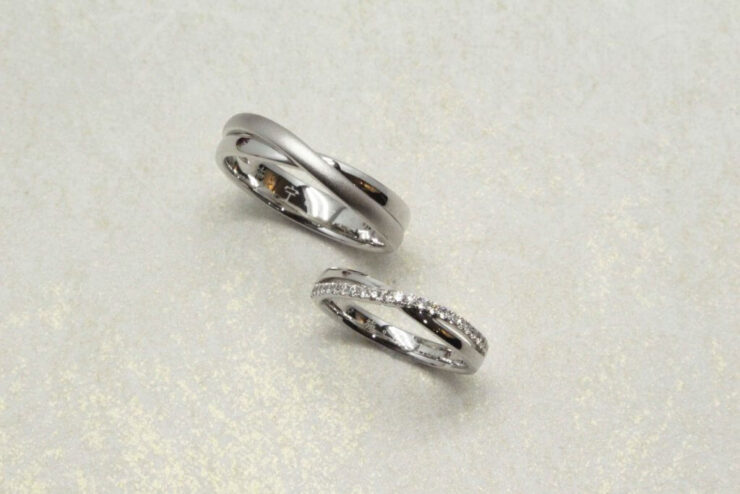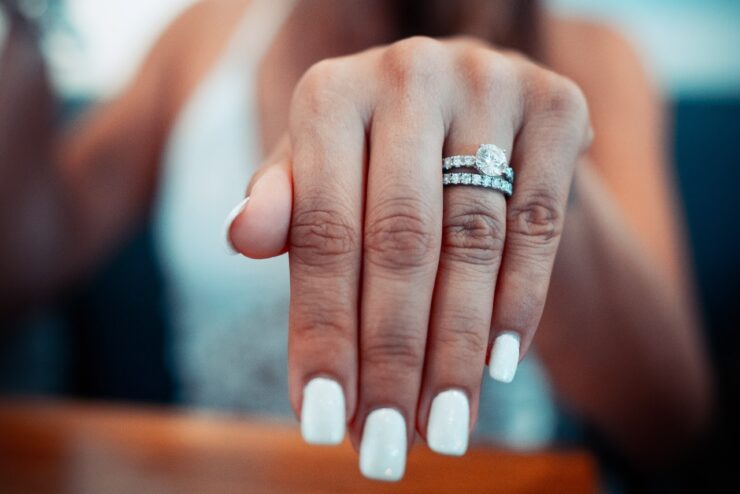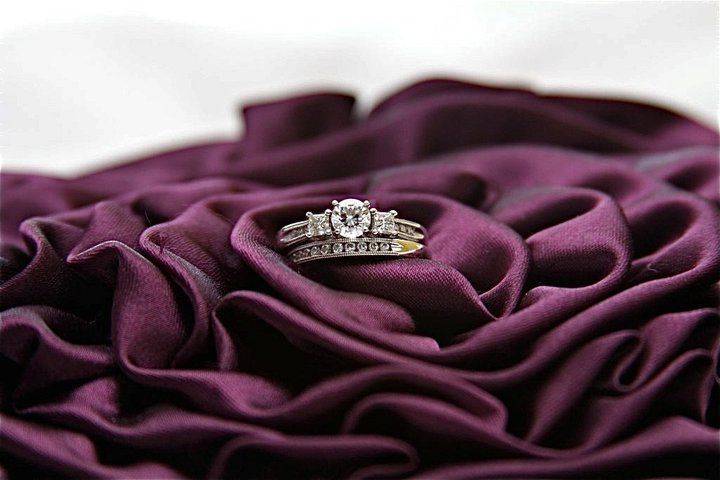In the timeless tradition of exchanging rings during a proposal and wedding ceremony, a common question lingers: which should be worn first—the engagement ring or the wedding ring? While this may seem like a matter of personal preference, there are customary guidelines to consider. In this article, we will delve into the dilemma and explore both traditional and modern approaches.
Symbol of Promise and Love
Engagement rings are typically the initial ring presented in the journey toward marriage. It symbolizes a commitment and promise to marry one another. Tradition dictates that it is worn on the fourth finger of the left hand, known as the “ring finger,” due to ancient Egyptian beliefs that a vein in this finger leads directly to the heart.
Wedding Ring: A Symbol of Eternal Union

The wedding ring, also referred to as the wedding band, is exchanged during the marriage ceremony and represents the everlasting bond and commitment between spouses. Traditionally, the wedding ring is placed on the same finger as the band, but it is positioned beneath it.
The Traditional Approach: Engagement Ring First
The traditional approach, which places it before the wedding ring, is steeped in time-honored symbolism. It signifies the chronological order in which these rings are exchanged during the romantic journey toward marriage. It is presented as a token of love and commitment and takes the lead in this sequence. It embodies the promise to wed, a significant milestone in a couple’s life. As the wedding day arrives, the wedding ring is placed below the engagement band, symbolically sealing and strengthening the vows made during the engagement period. This established tradition not only respects the historical significance of each band but also carries forward the sentiment of promise and devotion, making it a cherished practice for couples embarking on their lifelong journey together.
The Modern Approach: Stacking or Separating Rings
Modern couples often enjoy more flexibility in how they wear them. Some opt to stack the engagement and wedding band on the same finger, with the engagement band on top, while others choose separate fingers. This approach allows for customization to suit individual style and comfort.
Alternatives and Customization

In recent years, some couples have embraced alternative traditions, like exchanging only one ring at the wedding ceremony or both partners wearing them. Engraving meaningful messages or dates inside the band is another way to add a personal touch to their symbolism.
Final Thoughts
Ultimately, the order in which you choose to wear your engagement and wedding rings is a matter of personal preference and cultural or familial traditions. Open and honest communication with your partner about your preferences and how you wish to symbolize your commitment is essential. There is no universally correct answer to the dilemma; what matters most is the love and commitment behind themselves.
Whether you adhere to the classic approach or craft your unique tradition, the sequence of wearing your engagement and wedding rings should reflect the love and commitment you share with your partner. They are more than adornments; they are symbols of a deep and lasting connection, whatever order they may be worn in.
